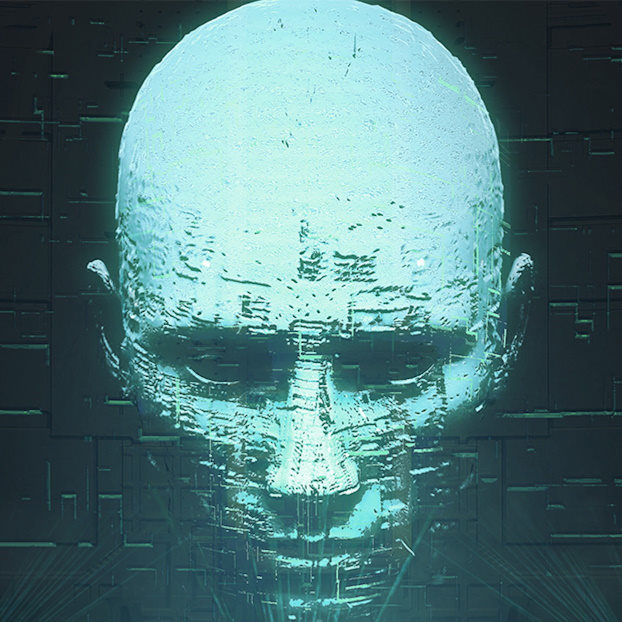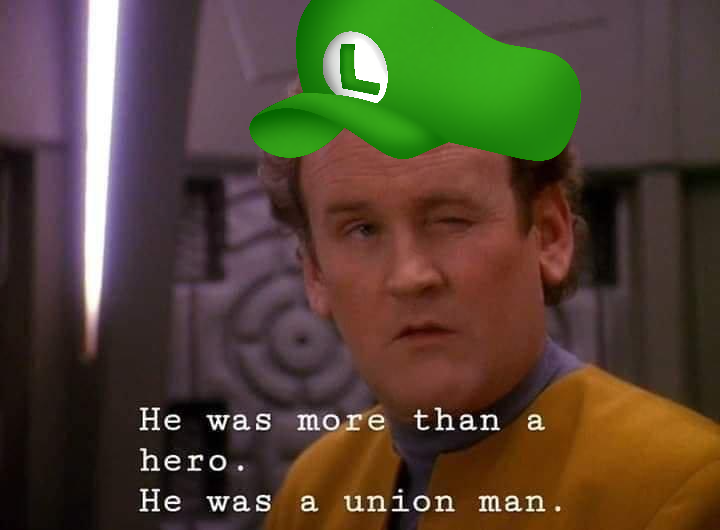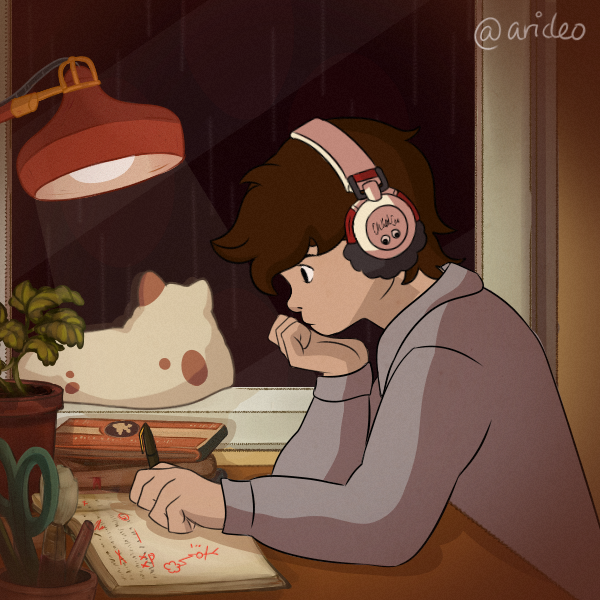Designers of last year’s Marvel’s Spider-Man 2 used the processing power of the PlayStation 5 so Peter Parker’s outfits would be rendered with realistic textures and skyscraper windows could reflect rays of sunlight.
That level of detail did not come cheap.
Insomniac Games, which is owned by Sony, spent about $300 million to develop Spider-Man 2, according to leaked documents, more than triple the budget of the first game in the series, which was released five years earlier. Chasing Hollywood realism requires Hollywood budgets, and even though Spider-Man 2 sold more than 11 million copies, several members of Insomniac lost their jobs when Sony announced 900 layoffs in February.
Cinematic games are getting so expensive and time-consuming to make that the video game industry has started to acknowledge that investing in graphics is providing diminished financial returns.
It was clear this year, however, that the live service strategy carries its own risks. Warner Bros. Discovery took a $200 million loss on Suicide Squad: Kill the Justice League, according to Bloomberg. Sony closed the studio behind Concord, its attempt to compete with team-based shooters like Overwatch and Apex Legends, one month after the game released to a minuscule player base.
“We have a market that has been in growth mode for decades,” Ball said. “Now we are in a mature market where instead of making bets on growth, companies need to try and steal shares from each other.”
Ismail is worried that major studios are in a tight spot where traditional games have become too expensive but live service games have become too risky. He pointed to recent games that had both jaw-dropping realism — Avatar: Frontiers of Pandora (individual pebbles of gravel cast shadows) and Senua’s Saga: Hellblade II (rays of sunlight flicker through the trees) — and lackluster sales.
Realistic does not equal to good looking. In example Zelda Breath of the Wild looks good, but its hardly realistic. And if all games are very realistic, then it gets a little bit boring, as all games start to look the same. The AAA gaming industry is too much focused on lip sync, realistic faces, grass and puddles. I don’t feel like getting lost in a game, but more like watching a movie. It’s so boring to me (I’m looking at you Red Dead Redemption 2).
Rdr2 was a fanatic game though…
I think the point is that it would have still been a fantastic game if it hadn’t sunk a load of money into looking like a movie.
I disagree. The art design and realism was one of the reasons why it was so good. It’s still one of the best looking games of all time. It also proves that you can make a good looking game that also is fun and fulfilling. It’s honestly a success story all around.
In fact, the “cinematic” shit was the worst part of it IMO. There were gameplay segments where it got very tedious.
Ok, but… shrinking horse balls. That’s realism!
I had the good fortune to have a medical emergency that allowed me to be on sick leave long enough to play through it at a leisurely pace.
Worth it.
I’ve always disliked how washed out BotW looks. It’s like they could only process limited colours so they reduced the contrast and everything is light grey with a hint of colour.
It’s actually a deliberate stylistic choice. The colors are washed out with a post-processing filter. Textures are actually much more colorful. You can fix this in an emulator, but the problem is that it’s difficult to find a color preset that works in all lighting conditions. BotW has a consistent, almost painterly art style, even if it’s relatively muted.
Yep, did this, looked great and I loved it. Botw modded was a great experience. Just skipping all those unskippable cutscenes was worth it already. (Teleport animations, sign repair dialogue, etc etc)
Turns out you have to make a good game too. Who would have guessed?
Good games don’t automatically sell, on the contrary. Your average Ubisoft open world slop is “good”, but that’s not enough. Even very good, exceptional games don’t automatically sell. Game development is inherently risky. Large publishers tried to game the system by making “safe” bets, by offering spectacle in combination with tried and true mechanics and narratives. This worked for a long time, but due to changing market conditions, the core audience for these types of games getting tired of them and younger gamers not caring about the presentation, these publishers are spending more on a shrinking segment of the market.
The problem is that they maneuvered themselves into a corner. They have built huge, art-heavy studios in expensive cities to make large games that bring in large sums of money that finance this costly development. You can’t easily downsize this kind of operation, you can’t easily change your modus operandi after having built entire companies around it. I’m convinced that this will result in the death of most large publishers and developers. Ubisoft is only the start.
Why should EA, Microsoft or Sony fare any differently? Each can only hope that enough of their major competitors die so that they don’t have to fight around the same segment of the market anymore. They are all fundamentally unable to meaningfully capture the P2W and Gacha markets (same thing, really), especially in Asia, a segment where companies that were built to serve these types of games are truly at home. Those will slowly take over, until they too are too large and bloated to respond to changing market conditions - or until some event outside of their control, like a major conflict and/or economic crisis, wipes them off the map, paving the way for someone else entirely to lead the industry. The only thing that will remain constant is millions of small Indies fighting for scraps, with a tiny handful having the right combination of luck and skill (although mostly the former) to make a decent living.
“too”
Amen
The Michael Bay method of video game production - overproduced with no substance
Just saw a video today about how on steam roughly half of the best rated games are indie titles. Needless to say that the 2D graphics are not photorealistic.
Maybe, instead throwing money on graphics alone, focus on making fun games?
I like that we can get both indie and AAA and that indie developers can successfully create a whole of the former without big business. Not many places any more where a single person can offer a quality product that sits next to a business’ with hundreds of millions of investment.
What, you mean you don’t play games and go “Well that looked great! Well worth my time!” like an awful lot of the AAA game industry appears to think gamers do?
Huh.
Seriously though, I’m curious how we ended up in the make-shit-prettier race and not a make-the-writing-good, or make-the-game-actually-fun, or even things like make-more-than-two-dungeons (looking at you, Starfield) race.
Especially given the cost to me, personally, to keep upgrading my GPU has reached an untenable level: I’m sure as crap not paying $2000 for a new GPU just so we get a few extra frames of hair jiggle or slightly better lighting or whatever.
People from outside the industry have seen a profit opportunity and decided to invest. As investors, they think they’re smarter than everyone else, even the people they pay to do things for them. Since they have no attachment to games as a medium they’re wowed by flashy visuals, and since investors have the money you need to produce a game, you cater to their tastes if you want to get paid.
That, and I think graphics is the easiest part of a game to min/max. You can take any pile of garbage and hire a couple animators, 3D artists etc etc to make it look gorgeous, but it’s difficult to find someone who can write a really good story every single year for a release
Graphical realism is an easier metric than good writing or fun.
All MBAs, in all industries, need to be done away with.
It’s also far easier to reliably create at scale. It’s relatively easy, with enough money and experience, to create art and programming teams that each make their own horse testicle textures, but how do you compartmentalize the creation of fun?
What do you think is easiest to show in a 1min trailer: industry leading graphics, good writing or fun gameplay?
Many people (including me) consider the best game of 2024 to be Balatro.
Balatro. A game made by one guy who legitimately didn’t even think anyone other than his friends and family would buy it.
AAA studios do not understand what people enjoy at all.
Balatro is 1) a fluke, an exception, a rarity and 2) not something big studios could even possibly replicate. What would be the point of a big studio trying to make a game that one developer can pull off? The closest the likes of Ubisoft in particular are getting to games like Baltro are their Indie-esque side projects that parts of their bigger studios engage in on the side, like Valiant Hearts. Those can never be enough to finance a big operation though.
You’re missing my point and arguing against a strawman here. All I’m arguing is that the things AAA studios focus on (like hyper-realism) are not the things that make a game fun, and AAA studios sound be putting fun as the focus.
I’m not arguing against a strawman, but against someone who might want to look into this topic a bit more closely. Balatro sold two million copies less than Star Wars Outlaws. People obviously want flashy spectacle more than tight mechanics - it’s just that even those higher sales figures weren’t enough to compensate for the bloated development budgets. That’s the real lesson. The old method of spending more and more money to make more and more money isn’t quite working anymore - not that people don’t want pretty graphics anymore (because they still do want those more than basic Indie art).
Yeah you’re still not even contradicting what I’m saying, you just think you are. You’re arguing against positions I don’t hold lmao.
Balatro is…not something big studios could even possibly replicate
…and why not?
What would be the point of a big studio trying to make a game that one developer can pull off?
…money?
…and why not?
Because Balatro is a single developer’s vision realized without compromise, without producers, writers, tech people, art directors, etc. all meddling with the production in the usual “design by committee” approach that large studios are using. This kind of game can only exist as a solo or very small team project.
…money?
The mantra of big studios and publishers is to spend lots of money to make lots of money. Balatro sold a mere 3.5 million copies over the course of a year, for a price of $14. That’s just $34.3 million taking Steam’s 30% cut into account. Huge money for a solo dev (especially given that the budget was just $125,000), but both the sales figure and the sales revenue are in serious flop territory by big studio standards. Star Wars outlaws underperformed at 5.5 million copies sold, since it cost hundreds of millions to develop and market, including having the highest marketing budget of any game ever made. To put this into perspective, this means they spent significantly more than $150 million (the usual figure for a top of the line AAA game these days) on marketing alone.
You can not generate the kind of money that large publishers and studios need to survive with little Indie games.
“design by committee” approach that large studios are using
They don’t have to use that.
This kind of game can only exist as a solo or very small team project.
That’s just very clearly wrong.
You can not generate the kind of money that large publishers and studios need to survive with little Indie games.
Wrong again. If anything, only large publishers can lose the kinds of money that they sometimes do.
Okay, I’ll bite: Since I’m very clearly wrong about everything, show me a large studio that doesn’t use the design by committee approach, makes small games on Indie budgets and survives on that.
You’re wrong because of the specific words you’re choosing to use. Even if they aren’t, it doesn’t mean they can’t.
Ulrich, mate, you’re more German about this than I am - and that’s not meant as a compliment. Allow me to take the scepter as the most
analGerman user in this discussion back with another pedantic, probably too condescending reply.I don’t remember if I explained this to you directly or someone else in this discussion, but the thing with large studios is that they are incredibly art-heavy (lots of texture artists, 3D modelers, animators, etc.), because you can compartmentalize art and have many little worker bees work on their little flowers (both figuratively and literally) in parallel and then assemble it all together into one big mess of an open world game with a billion map markers for you to ignore. For many years now, ever since the seventh console generation, this has been the ticket, this brought in the big bucks in the gaming industry.
The Western studios that pioneered this approach are now being threatened on two fronts: 1) Eastern (non-Japanese) studios that use the same art-heavy approach (but with different organization, which doesn’t matter here, because they too are spending lots on many worker bees) on F2P and Gacha games, which offer spectacle and impressive vistas and a billion trillion map markers (but for free*) and 2) a tiny handful of absolutely ginormously successful Western titles - Indies, former Indies and AAA - that don’t care one bit about the presentation, spectacle and artist-driven content beyond the most basic of necessities (see: Minecraft’s blocky blocks and unfiltered textures) or a litany of tie-ins simulating variety and freshness (e.g. Fortnite, Rocket League), but instead shine through organic player interaction and user-generated content.
It’s not Indie darlings like Balatro and Stardew Valley that threaten these publishers. Like I explained before, the revenue those games are generating is not sufficient to sustain large enterprises and because their success is incredibly random and unpredictable, big studios can’t just divide their armies of worker bees into smaller teams that each work on a little game, with all those little games then in bulk creating the same revenue as a large titles. Since it’s possible to find 500 people that can draw horse testicle textures, but not possible to find 500 people on the job market that can write a good script for a game or design a fun gameplay loop (seriously, those are the rarest talents in the entire industry) and finish the damn thing in time too, the idea you’re proposing simply isn’t realistic. The most you can hope for is that Ubisoft and others find a few people in their large studios and allow them to work on little artistic high-concept side projects every now and again (like for example Grow Up/Home), as an image boost for the company, a treat for fans, but not to make money, because these projects really don’t.
The unfortunate thing is that the likely reaction to the success of Chinese and Korean F2P/Gacha games is that Western studios will try to emulate those. It’s not even a thing for the future - this has already started. The whole loot box nightmare we’ve all been moaning and groaning about is a direct copy of South Korean MMO mechanics - and Ubisoft’s AAAA(AAAAA) pirate MMO disaster was a blatant attempt at going after the kind of audience, but they wanted to have the cake and eat it too, release it as a full-price game and keep people busy with busywork loot boxes. Same thing with Bioware’s Anthem. One of few successful Western games of this type is Destiny. Ubisoft, EA, ActiBliBethMic (and Japanese publishers) are likely going to bet hard on the large Gacha game idea (at least that’s what I’m expecting), because they can use their existing experience with managing large art departments in those games as well, only having adapt mechanics, monetization and marketing accordingly. I doubt they’ll be successful, but maybe this can save them. Our hope as players who aren’t enjoy game mechanics and monetization that are optimized to drive up the credit card debt of whales [players who spend a fortune on F2P games] is that these projects end up making enough money so that some of the profits will get spent on games that aren’t thinly disguised Skinner boxes.
Feel free to tell me whether or not this makes sense to you. I have a love/hate relationship with this discussion and topic. They are both equally frustrating and interesting.
I spoke against the need for realistic graphics last time the topic came up, and I’ll say a word in favour of it now: It’s pretty awesome having realistic lighting and shadows when you’re admiring the scenery in Skyrim. My 6600 can barely keep up, but the work it’s doing there is fully aesthetically worthwhile. The same can’t be said for every GPU-hungry game that comes out, and it may not have the central importance that it used to, but nice graphics are still nice to have. I say that as someone who appreciates NetHack at least as much as any new AAA game.
I think the issue is a bit more nuanced. Graphics have gotten so good that it is relatively easy to get character animations which sit in the uncanny valley.
The uncanny valley is bad. You can have beautiful, photorealistic graphics everywhere, but if your characters are in the uncanny valley, the overall aesthetic is more similar to a game which didn’t have the photorealism at all.
In the past, the goalpost was at a different spot, so putting all the resources towards realism still wouldn’t get you into the valley, and everyone just thought it looked great.
Photorealism just puts a lot of constraints on gameplay mechanics and art direction.
I am literally playing minecraft without any of those shader texturepacks because I kind of prefer games not being ultra realistic. If being realistic was more fun than we would not need games to have fun because we have real life which is as real as you can get.
Texture packs or not, IMHO the key point is they’re optional, not a requirement for the game to be playable. Games that depend on photorealism, are bound to end up in deep trouble.
They’re simply drawing all the wrong conclusions here:
even though Spider-Man 2 sold more than 11 million copies, several members of Insomniac lost their jobs when Sony announced 900 layoffs in February.
The layoffs don’t mean the game or company were unsuccessful, it means they found other ways to eliminate those jobs.
Warner Bros. Discovery took a $200 million loss on Suicide Squad
That’s nothing to do with graphical fidelity, it was a shit game that followed up a shit movie.
Sony closed the studio behind Concord
Lots of potential reasons for this. If you ask me, they released a $30 game into a genre chock full of “free to play” games.
Personally I appreciate “cinematic” games but titles like Balatro and Stardew Valley (neither of which I own) are proof of the simple fact that making games that are actually fun to play is far far more important, and far more profitable.
Most executives at large publishers aren’t gamers. Pretty pictures are more likely to entice them than deep mechanics. They could assign 5 people to make a game like Balatro or Stardew Valley, but they never would because they don’t work like that, they came up through the MBA route and think in terms of enterprise software development lifecycles. Also, “making money” isn’t good enough for them, they want to make so much money that they can pay themselves millions of dollars despite never actually contributing to the game.
Did executives misread the market?
The problem isn’t detailed graphics, the problem is shit performance. The new generation of UE games look average, and require ridiculous hardware + upscaling to run smoothly
The problem is shit design, the same games we’ve played before mechanically over and over with increasing price tags
To be fair, I don’t think all of the blame can be laid on execs. Game directors and Art directors are often the source of the issue.
I’ve seen execs come to a studio and say: “Make something AAA, a single player game with unique gameplay and a great 10 hour story, and get it done in a couple of years. Don’t worry about the bottom line, we want a showcase experience.”
Then the directors come back with: “Okay, showcase you say? How about a AAAA 20v20 open world multiplayer shooter (nobody is doing that!), SaaS (to keep’em coming back), with ultra realistic graphics (it’ll be epically fun that way), a $100million budget (we’ll outsource to save money), MTX so we can make tons of money (we get profit sharing right?), and we do it in 3 years (for work-life balance)?”
Devs are just sitting there shaking their heads and thinking… “Here we go again…”
How about a AAAA 20v20 open world multiplayer shooter (nobody is doing that!), SaaS (to keep’em coming back), with ultra realistic graphics (it’ll be epically fun that way), a $100million budget (we’ll outsource to save money), MTX so we can make tons of money (we get profit sharing right?), and we do it in 3 years (for work-life balance)
I 100% believe most of these unrealistic expectations come from the execs. Decisions like these aren’t made by art directors. They come from on high. Art directors and game directors aren’t the ones making the monied decisions.
I’ve seen it first hand. Repeated statements by the corp execs asking for one thing, studio directors trying to push something else.
I mean, I’ve also seen execs ask for ridiculous shit as well, I’m just saying sometimes it really does come from the studios themselves.
I would argue fancy graphics help sell it. It’s the easiest way to grab attention, be it in a trailer or while watching a streamer. Depending on the game it also helps immersion, but not all games need that. All AAA games need to be sold though (at least that’s the aim of any AAA publisher). And people have bought them. And they still do. But they’re starting to learn that attention grabbing graphics doesn’t equal good game.



















